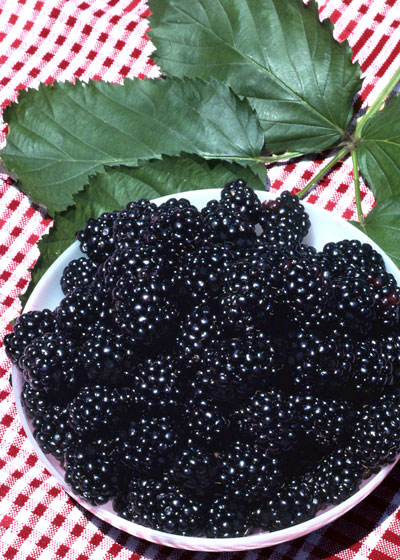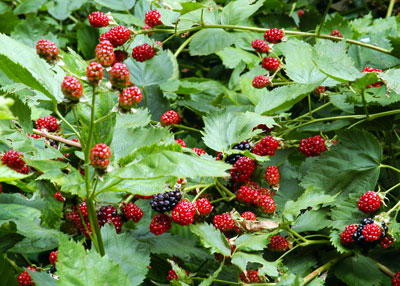Our Easiest Fruit Crop
Forget peaches and apples, grapes and strawberries. Don’t even think about cherries. If you want a sure-fire fruit crop for Texas – one that just about everyone likes, go with blackberries.

If ease of production is a critical feature of your backyard fruit garden, start with blackberries.
You kinda get the idea of their adaptability when you find both upright and trailing blackberries growing wild over much of the eastern third of the state. But we have much better uprights, and trailing blackberries (aka “dewberries”) aren’t as productive. Here are your steps to success.
Plant in full sun and in elevated beds of well-prepared soil to which you have added several inches of organic matter.
Transplants are generally sold in nurseries in January. Those are bare-rooted. However, you may be able to find potted transplants in independent retail garden centers even now. Or you can dig your own divisions from established plants in your garden or a garden of a friend. Again, late January is the time to do that digging and relocating.
The easiest way to grow and maintain blackberries is to train them within trellises. Set posts in two rows 24 inches apart. Set your transplants right down the middle, 12 inches from each side. Secure two heavy wires along each row of posts, one wire at 24 inches and the other at 48 inches. As the canes grow taller, keep them pushed within the wires. That will keep your plants from sprawling all over the garden. High-fives from blackberry canes aren’t always welcomed.
Fertilize blackberries with a high-nitrogen or all-nitrogen plant food every 4 to 6 weeks during the growing season.
Blackberries produce fruit on the prior year’s growth. That means that if you plant them in a given January, they will bear fruit 17 or 18 months later in late May or June. Once a blackberry cane has borne fruit, it will never bear fruit again. It must be cut to the ground immediately after harvest to make room for the new canes that will be ready to produce the following spring.

Blackberries mature over a 2- or 3-week period in late spring/early summer. As soon as all fruit has been harvested, use long-handled lopping shears to cut producing canes completely to ground. They will never bear fruit again.
Best varieties
Considerable research has been done to find even better selections. We now have some very fine thornless types, including Apache, Natchez, Navaho and Ouachita. Of the thorny-stemmed blackberries, the best are Kiowa, Chickasaw and Brazos.
What about raspberries?
In a short phrase, they’re simply not adapted here. Dorman red raspberry is the only one you’ll see on recommended variety lists from Texas A&M. It’s from Mississippi, but its problem is that it has no flavor. In a TAMU research plot one year I was given all that I wanted. One fruit, and that was all that I wanted. Stick with the blackberries.
